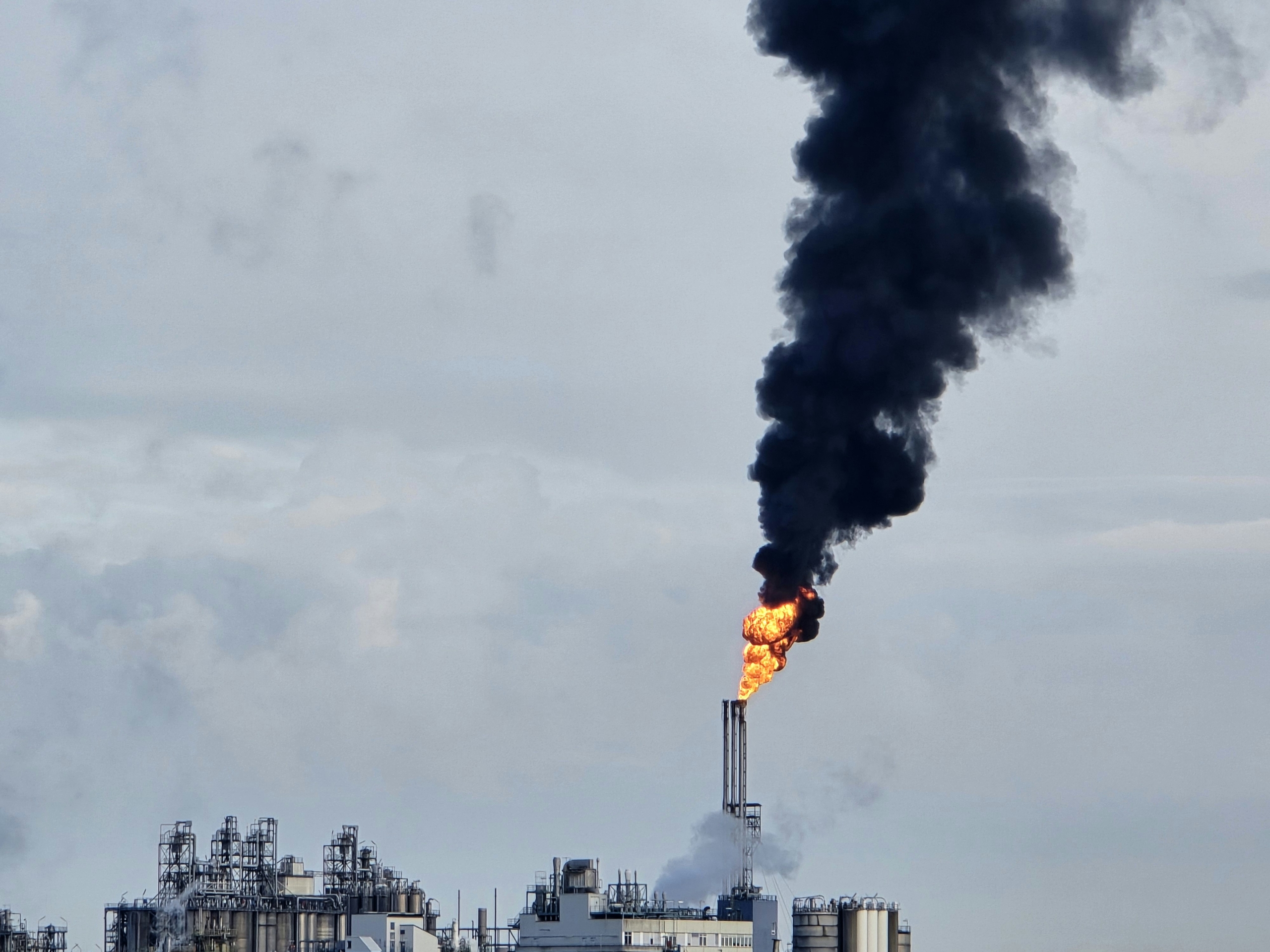We are excited to announce that Brink is now part of Africa Practice. Learn more
The carbon conundrum: Africa’s challenge and opportunity under CBAM

The European Union’s (EU) Carbon Border Adjustment Mechanism (CBAM) represents a major global trade and climate policy shift, with wide-ranging implications for African exporters, notably South Africa.
The mechanism
CBAM was introduced by the EU in October 2023 as part of the ‘Fit for 55’ policy package, which aims to reduce the bloc’s net greenhouse gas emissions by 55% by 2030. This mechanism includes a carbon border tax on carbon-intensive imports, affecting aluminium, cement, electricity, fertilisers, hydrogen, iron, and steel. While reporting has already begun for these sectors, ahead of CBAM’s implementation in 2026, the EU is contemplating broadening its scope to include additional sectors, indirect emissions, transportation services, and downstream industries. It is imperative that Africa’s most industrialised economies prepare for CBAM’s impact and consider their carbon strategies ahead of this deadline.
CBAM involves EU importers purchasing “CBAM certificates”, the price of which is determined by the emission intensity of the imported product. The revenue generated by these certificates will mirror the weekly average income of the existing EU Emissions Trading System (ETS). Importers will receive declarations from African suppliers detailing the carbon content in their products, including various carbon inputs, for example, the carbon intensity of electricity used in production. Essentially, the more carbon-intensive a product, the more expensive it will be for European importers to import.
CBAM’s anticipated impact
The economic implications are significant. A joint study by the African Climate Foundation and the London School of Economics anticipates that CBAM could reduce exports of key African commodities to the EU. The study projects a potential decrease in exports of aluminium (by up to 13.9%), iron and steel (8.2%), fertiliser (3.9%), and cement (3.1%). The decline will likely have a broad impact on Africa’s macroeconomy, potentially reducing continental GDP by 1.1% – equivalent to USD 31 billion as of 2021.
CBAM also raises concerns about global inequity in climate responsibility. The least-developed economies, which make a minimal contribution to global carbon emissions, face tariffs that will undermine their trade competitiveness with the world’s largest regional economic bloc. This highlights a degree of hypocrisy on the part of the EU. While the least-developed economies are among the lowest contributors to global carbon emissions, they often bear the greatest impact of climate change, as well as facing an imperative to restructure their economies with the energy transition and adapt to evolving climate change regulation. This imbalance challenges the principles of equitable climate action and risks widening the economic divide as governments strive to balance environmental commitments with their developmental aspirations in a rapidly transforming global market.
South Africa in the crosshairs
CBAM marks a particularly complex challenge for South Africa, as the continent’s most industrialised economy and top exporter to the EU. South Africa’s reliance on primarily coal-based, carbon-intensive electricity generation exposes its exports to tariffs, reducing its competitiveness in European markets. This threatens to hit key value-added products, including ferroalloys, chemicals, and manufactured goods like cars and trucks. For instance, in 2021, the EU received 49.6% of South Africa’s total export value of automotive components and accounted for 77.1% of the vehicle export volume from the domestic automotive industry. CBAM’s approach to embedded emissions implies that the total carbon footprint of a product, including all stages of its production process, is considered, with vehicle exports being indirectly affected due to its dependence on carbon-intensive materials such as steel and aluminium.
South African authorities have accordingly labelled the mechanism “coercive”, expressing concerns about its compliance with the World Trade Organization’s non-discrimination rules. Still, South Africa and others in the region have an opportunity to mitigate these impacts, adapt, and benefit from CBAM. The continent’s vast renewable power potential offers a unique advantage in producing green hydrogen, creating a route to reduce emissions in hard-to-abate sectors, including iron and steel, aluminium, fertiliser and heavy manufacturing.
Projects producing hydrogen outside the EU that are intended for import to the bloc will experience changes due to CBAM, especially during its transition phase. Hydrogen is considered a basic commodity under the CBAM since its production materials and fuels are emission-free. Consequently, no precursors associated with hydrogen need to be disclosed. However, the emission of the electricity or fossil fuels used in its production will have to be reported. This will help to promote imports of green hydrogen when payments under CBAM come into effect in 2026.
Expediting Africa’s energy transition
In the wake of the Africa Climate Summit, European governments and investors increasingly recognise the continent’s potential as a green industrialisation hub – themes set to feature heavily at COP 28. European manufacturers are exploring opportunities to relocate their most carbon-intensive activities to Africa to leverage the continent’s green energy resources. However, projects still need to overcome structural economic barriers such as unfavourable lending rates and high government debt burdens, which complicate access to the required development finance.
The EU’s Global Gateway programme, aimed at supporting sustainable development worldwide, can assist African countries in transitioning to greener economies. However, it has faced criticism from development entities for its limited scope and ambition. An alternative strategy might involve directing revenue from CBAM – estimated to reach USD 9 billion annually by 2030 – towards development finance rather than allowing it to flow back into the EU budget.
Political strategies, such as negotiating with the EU to allocate CBAM revenues back to countries like South Africa to develop greener infrastructure, are also on the table. South Africa’s government can explore political strategies to channel CBAM revenues into its Just Energy Transition (JET) initiatives, which build on commitments made by the UK, France, Germany, EU and USA at COP 26. Notable initiatives include utility company Eskom’s JET project, which focuses on transitioning from coal to renewable energy sources, in line with South Africa’s Just Energy Transition Investment Plan. This approach could enhance the country’s energy security, reduce greenhouse gas emissions, and create economic opportunities in sustainable industries. If the EU was to channel CBAM revenues back to such initiatives, the bloc would demonstrate greater alignment with South Africa’s environmental goals and offer a more equitable solution to the global challenge of climate change
In South Africa, opportunities are emerging for industries, such as aluminium smelters, to negotiate greener electricity supplies, potentially from nuclear sources. Recent developments indicate the potential for augmenting these supplies with electricity imports from regional partnerships. Notably, South Africa plans to import 1 GW of electricity from Mozambique, leveraging gas to displace more emissions-heavy coal. The country also benefits from access to the Southern African Power Pool (SAPP), which facilitates electricity trading among member countries. This includes abundant, affordable electricity from Mozambique’s Cahora Bassa dam and hydropower stations in Lesotho. These integrated regional energy sources enhance the sustainability of South Africa’s electricity supply to mitigate the financial impact of CBAM on its exports.
Elsewhere on the continent, countries such as Kenya, where renewable energy accounts for over 95% of grid power, have a competitive advantage, positioning them at the forefront of the move towards green industry and manufacturing. However, for countries such as South Africa, where industry is already mature, the path to adaptation is complex. Developing new trade agreements and commercial relationships with countries that have already begun considering similar carbon mechanisms will be time-consuming.
Localising carbon requirements
For South Africa transitioning from coal-based energy production remains a significant hurdle. Implementing a domestic carbon reporting system could ease the administrative burden for South African firms, aligning them with CBAM’s reporting requirements. Additionally, effective carbon prices or taxes that have already been paid in the country of production can be deducted from CBAM payments. In this context, South Africa has already implemented carbon requirements, including the Carbon Tax Act of 2019, which could underpin these efforts. The Carbon Tax is applied to entities operating emission-generating facilities above a certain threshold. This tax is calculated at ZAR 120 per tonne of carbon dioxide equivalent emissions, increasing annually to encourage the transition towards cleaner technologies and energy efficiency.
Governments and development agencies already offer a range of support, including technical assistance and financial aid, under initiatives like the EU’s Global Gateway strategy. This strategy focuses on enhancing trade, addressing challenges such as cumbersome regulations, and improving infrastructure. However, there’s a need for more focused support specifically in trade development and impact mitigation of policies like CBAM.
As CBAM payments are only due from 1 January 2026, there is a window for the South African government and other African nations to prepare for and mitigate its impact. Governments need to create strategies at the national level, identify the likely impact of CBAM on different sectors – including in terms of jobs and export revenues – and prepare to restructure their economies and green their industries.
The next two years will be crucial for the development of strategies which expedite Africa’s energy transition and ensure the continent scales back emissions while strengthening the resilience of its industries to ensure they can navigate global trade and environmental policy complexities.
About the author
Victor Perez is a Senior Consultant residing in Johannesburg, with a special focus on energy transition and the digital economy. He can be reached at [email protected]
Proud to be BCorp. We are part of the global movement for an inclusive, equitable, and regenerative economic system. Learn more


